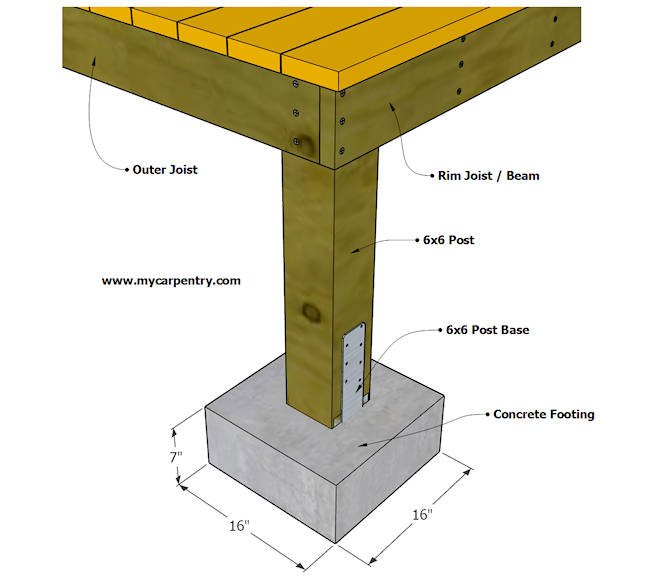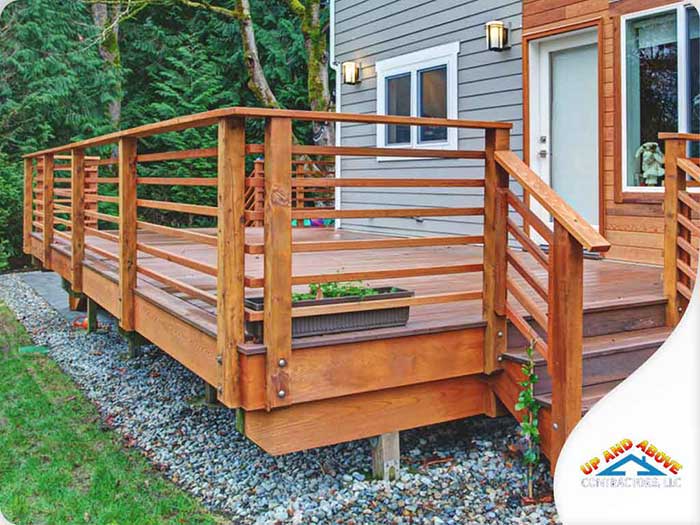A Solid Structure for Your Oasis: Exploring the Significance of Deck Footings in Outdoor Structures
A Solid Structure for Your Oasis: Exploring the Significance of Deck Footings in Outdoor Structures
Blog Article
Specialist Tips for Installing Deck Footings to Support Your Outdoor Area
When it comes to developing a deck, one of the most critical aspects to consider is the setup of appropriate footings. These footings are the structure upon which your outside space will certainly relax, providing security and assistance for years to come. What precisely does it take to set up deck grounds correctly?
Relevance of Proper Deck Grounds
Proper deck footings are crucial for guaranteeing the security and durability of your outdoor area. When creating a deck, it is vital to pay interest to the foundation on which it will certainly rest. Deck grounds offer the required assistance for the whole structure and help disperse the weight evenly - Deck Footings. Without strong and properly mounted footings, your deck might become unstable, causing safety and security risks and pricey repair work.

Along with security, appropriate deck grounds likewise add to the long life of your outdoor space (Deck Footings). Footings that are developed and built to endure the aspects and soil problems in your location will help protect against the deck from resolving or changing in time. By guaranteeing the footings are properly sized and mounted, you can reduce the danger of damage to the deck framework, extending its lifespan and minimizing the requirement for expensive repair work or substitutes

Selecting the Right Kind of Footings
When picking the appropriate sort of grounds for your deck, it is essential to think about factors such as soil conditions, regional building codes, and the total style of your outside space. The sort of footing you choose will play an important function in making sure the security and long life of your deck.
One usual kind of footing is the concrete footing. Concrete footings are ideal for most dirt conditions and give excellent assistance for decks. They are commonly mounted below the frost line to stop shifting and resolving as a result of cold and thawing cycles. An additional alternative is helical piers, which are excellent for locations with unstable dirt or high water tables. These piers are screwed right into the ground and give strong support for the deck.
In many cases, you may require to use specialized footings, such as pile grounds or deep structures, if you are constructing a large or multi-level deck. These grounds are designed to distribute the weight of the deck over a larger area, making sure stability and preventing sinking or clearing up.
Prior to selecting a kind of ground, it is important to get in touch with local building ordinance and laws to ensure conformity. Additionally, think about the design and meant use of your exterior space. Variables such as the dimension, shape, and load-bearing demands of your deck will affect the type of footing that is most ideal.
Preparing the Ground for Footing Installation
To effectively prepare the ground for footing installment, it is essential to analyze the soil conditions and take necessary steps to make sure security and sturdiness of the deck. The very first step is to excavate the area where the footings will certainly be mounted.
As soon as the location has actually been excavated, the next step is to compact the dirt. This can be done using a plate compactor or by making use of a hand tamper. Compacting the soil assists to remove any spaces or air pockets, which can bring about clearing up and instability in time.
After condensing the soil, it is necessary to lay a layer of crushed rock or crushed rock at the bottom of the excavation. This will supply drain and aid to prevent water from pooling around the footings, which can bring about disintegration and instability.
Step-by-Step Overview to Putting Up Deck Footings
After effectively preparing the ground for footing setup, the next action is to start the procedure of mounting deck grounds. This step-by-step overview will supply you with a clear understanding of exactly how to set up deck grounds for your outside room.
Determine the location: Beginning by marking the placements of the deck grounds making use of risks and string. Ensure that the locations align with the design and design of your deck.
Dig the holes: Make use of an article opening digger or an auger to dig the openings for the grounds. The depth and size of the holes should be in conformity with neighborhood building regulations wikipedia reference and the particular requirements of your deck style.
Degree the openings: Use a degree to make sure that the openings are dug to the appropriate depth and are degree with each other. (Deck Footings)
Add gravel: Location a layer of gravel at the base of each hole to enhance drainage and protect against the wood from rotting.
Insert the footings: Place the grounds right into the openings, making sure they are degree and plumb. Make use of a level and a measuring tape to make sure accuracy.
Safeguard the footings: Put concrete right into the holes around the footings, loading them to the top. Utilize a message level to make certain the grounds stay level as the concrete sets.
Allow time for treating: Let the concrete remedy according to the manufacturer's instructions prior to continuing with the deck construction.
Usual Blunders to Avoid During Footing Installment
One crucial aspect to think about during the installation of deck grounds is staying clear of usual mistakes that can compromise the stability and long life of your outdoor room. While deck grounds may feel like a simple and simple component of the construction process, forgeting particular variables can cause expensive repair services and prospective security risks down the line.

Furthermore, neglecting to install correct drainage actions can create water to collect around the footings, bring about rot, degeneration, and the ultimate weakening of the deck's structure. Additionally, utilizing the wrong sort of footing product or failing to effectively secure the footings can compromise their architectural integrity.
To stay clear of these errors, it is important to seek advice from a professional or follow industry standards to make certain proper ground setup. By doing so, important site you can guarantee the stability and durability of your exterior area, offering a pleasurable and safe atmosphere for years ahead.
Final Thought
In conclusion, installing appropriate deck footings is important for the stability and longevity of your exterior space. By choosing the right sort of grounds and appropriately preparing the ground, find more information you can guarantee a strong foundation for your deck. Following a step-by-step guide and staying clear of usual errors throughout footing setup will certainly better enhance the toughness and security of your deck.
Correct deck footings are essential for making sure the security and durability of your exterior space. The grounds offer as a link between the deck and the ground, permitting the weight of the deck and its passengers to be spread evenly right into the dirt.One typical type of footing is the concrete footing. Place the footings: Put the footings right into the holes, making sure they are degree and plumb. Protect the grounds: Put concrete right into the openings around the footings, loading them to the top.
Report this page